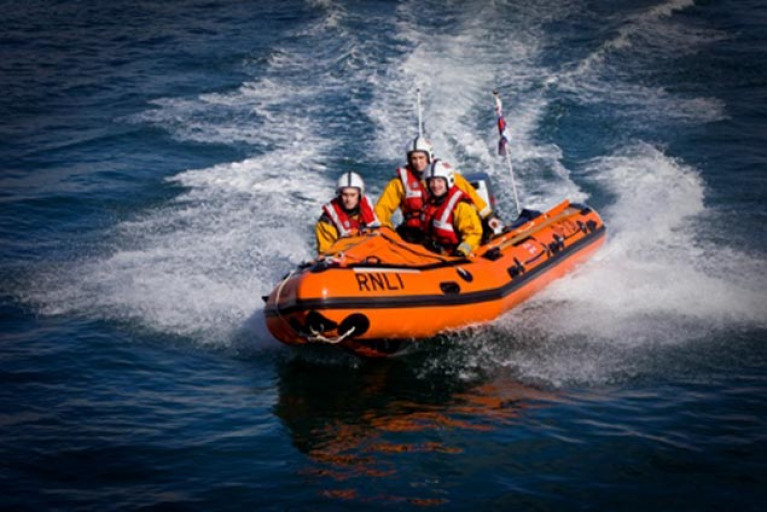Volunteers from Dun Laoghaire Harbour's RNLI station were involved in a two-hour search operation off the coast of Sandymount Strand last night (7 May), after receiving reports that a person was thought to be seen cut off by the tide on a sandbar. The call-out transpired to be a false alarm with good intent.
The station's volunteer crew were paged shortly before 10 pm by the Irish Coast Guard. The crew immediately launched their inshore lifeboat helmed by Alan Keville and with two crew members on board. The Irish Coast Guard helicopter Rescue 116 from Dublin, Dun Laoghaire Coast Guard unit, the Irish Air Corps and the Gardaí were also tasked.
Weather conditions at sea were good making visibility ideal for searching.
The lifeboat crew arrived at the scene at 10.17 pm and carried out an extensive offshore search with the helicopter. No evidence of a person in the water was found. The Coast Guard stood down the operation at approximately 12 am and the volunteers returned safely to the station.
Speaking following the call out, Dun Laoghaire RNLI Helm Alan Keville, said: ‘We are always here to respond to any situation that may arise at sea and this one was no different. The report to the Irish Coast Guard by a member of the public was most definitely made in good faith we would like to commend them for doing the right thing. While this was a false alarm with good intent, we are glad we had the opportunity to make sure no life was at risk as fast-moving tides and sandbanks have been a problem in this area in the past. This was a multi-agency response and we would also like to commend and thank our colleagues in the various other agencies as we worked together during the search.
‘Dun Laoghaire RNLI remains on call and is fully operational during the Coronavirus pandemic. While there is no crew training or exercises taking place, our volunteers are available if people need us.’































































